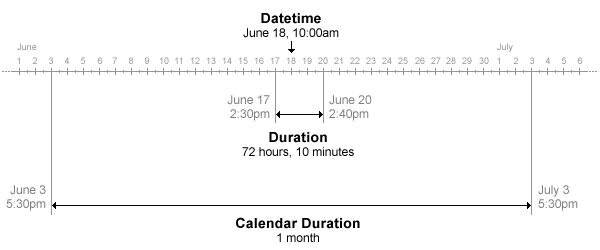duration
固定长度单位的时间长度
说明
持续时间数组中的值以固定长度(如小时、分钟和秒)为单位来表示经过的时间。您还可以用固定长度(24 小时)的天数和固定长度(365.2425 天)的年数创建已用时间。
持续时间数组的使用方式与数值数组相同。您可以对持续时间数组执行加法、减法、排序、比较、串联和绘图等操作。使用持续时间数组可以简化涉及时间单位(如小时和分钟)的日期时间数组的计算。

创建对象
您可以使用 years、days、hours、minutes、seconds 和 milliseconds 函数创建具有指定时间单位的持续时间数组。例如,要创建经用时间为 1、2 和 3 小时的数组,请使用 hours 函数。
D = hours(1:3)
D = 1×3 duration array 1 hr 2 hr 3 hr
您还可以使用下面介绍的 duration 函数创建持续时间数组。
语法
描述
D = duration(H,MI,S, 为持续时间数组增加由 MS)MS 指定的毫秒数。
D = duration( 将表示已用时间的文本转换为持续时间数组。TimeStrings)TimeStrings 必须使用 'hh:mm:ss' 或 'dd:hh:mm:ss' 格式来表示时间。
D = duration( 使用 TimeStrings,'InputFormat',infmt)infmt 指定的格式转换文本。
D = duration(___,'Format',displayFormat) 还指定 D 的显示格式。此属性更改 D 的显示格式,而不是更改其值。您可将此语法与上述语法中的任何参量一起使用。
输入参量
属性
示例
提示
扩展功能
版本历史记录
在 R2014b 中推出